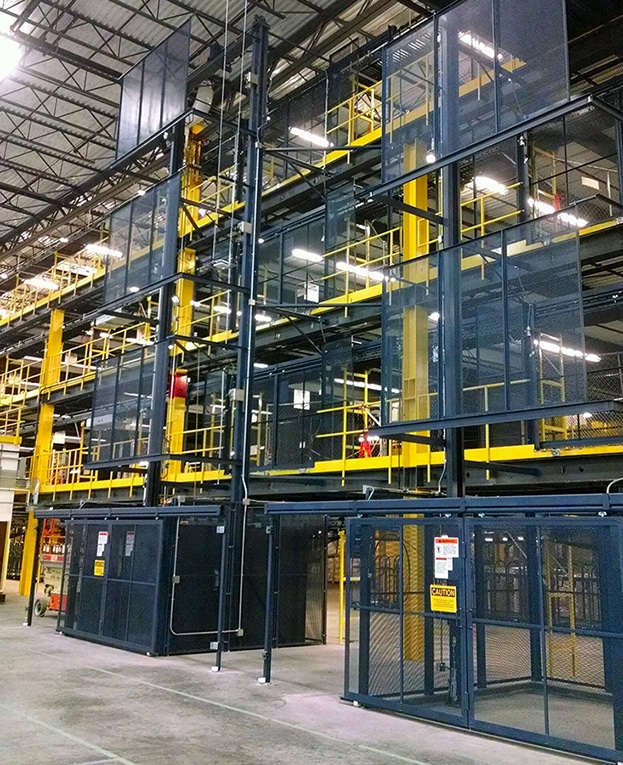Warehousing is a complex, constantly changing, fast-moving environment where even small mistakes can lead to safety risks, missed shipments, inventory errors, and lost productivity. Whether you manage a large-scale distribution center or a local facility, avoiding common warehousing mistakes can make a significant impact on performance and profitability.
Listed below are ten of the most common warehousing mistakes and how to avoid them.
1. Letting Inventory Inaccuracies Slide
Accurate inventory is the backbone of any efficient warehouse. Inaccurate counts can result in stockouts, overstocking, order delays, and unhappy customers. Warehouses still relying on manual logs or spreadsheets are especially vulnerable to these issues.
How to avoid it:
Use a warehouse management system (WMS) or warehouse execution system (WES) to track inventory in real-time. Keep stock organized by zone and regularly cycle count to catch discrepancies early.
2. Overlooking Picking Path Optimization
Poorly planned picking routes force employees to spend more time walking than working, slowing fulfillment and increasing fatigue.
How to avoid it:
Use warehouse analytics and mapping tools to design efficient picking paths. Group high-frequency SKUs together and keep fast-moving inventory near packing and shipping zones.
3. Relying on Paper-Based Processes
Manual, paper-driven workflows are slow, error-prone, and outdated. They also make training harder and limit visibility into warehouse operations.
How to avoid it:
Upgrade to digital systems such as pick-to-light (PTL), pick-to-voice (PTV), or even augmented reality (AR) technology to improve accuracy and speed.
4. Ignoring Scalability & Future Growth
Warehouses that don’t plan for future expansion often struggle with congestion, inefficiencies, and outdated equipment.
How to avoid it:
Build flexibility into your layout and operations. Work with a consultant or integrator to assess future needs, adopt scalable technologies, and create a roadmap for growth.

5. Skipping Employee Training & Development
High turnover and inconsistent training can lead to productivity gaps, safety violations, and quality control issues.
How to avoid it:
Invest in onboarding programs, continuous safety training, and career development to improve retention and performance. Well-trained staff are safer, faster, and more reliable.
6. Designing an Ineffective Warehouse Layout
A poor layout creates bottlenecks, unsafe conditions, and unnecessary steps for workers.
How to avoid it:
Design your warehouse for logical flow: receiving → storage → picking → packing → shipping. Allocate adequate space for staging and maneuverability, and regularly reassess the layout as your operations evolve.
7. Treating Safety as a Low Priority
Lack of safety protocols leads to injuries, lost workdays, and higher insurance premiums.
How to avoid it:
Establish and enforce warehouse safety policies. Conduct regular training and safety meetings, post visible signage, and ensure all equipment—especially lifts, ladders, and conveyors—is inspected and maintained regularly.
8. Letting Housekeeping Slide
Cluttered aisles, disorganized racks, and poor lighting don’t just look bad; they create serious safety hazards.
How to avoid it:
Schedule routine cleaning and audits. Promote a clean-as-you-go culture, and assign ownership for different zones to maintain standards across shifts.
9. Underutilizing Vertical Space
Too many warehouses operate inefficiently by storing everything at ground level, wasting valuable vertical space.
How to avoid it:
Use vertical storage solutions like pallet racking and mezzanines, and implement vertical reciprocating conveyors (VRCs) to safely move materials between levels.
10. Neglecting Data & Metrics
If you're not measuring performance, you can't improve it. Many facilities make decisions based on outdated assumptions or anecdotal input.
How to avoid it:
Track KPIs like order accuracy, pick rate, dock-to-stock time, and equipment utilization. Use dashboards and reporting tools to identify trends and opportunities.
Avoiding Mistakes Starts with Smart Planning
Every warehouse faces challenges, but by proactively avoiding these common mistakes, you can dramatically improve safety, productivity, and profitability.
Looking to reduce injuries and improve efficiency in your warehouse? PFlow’s custom hydraulic lifts and mechanical lifts offer a safe, reliable way to move materials vertically and reduce strain on your workforce.
Contact our team today to learn how a VRC can support your operation.
